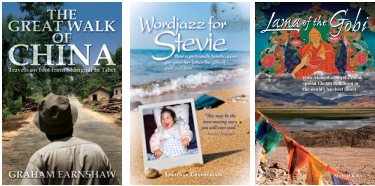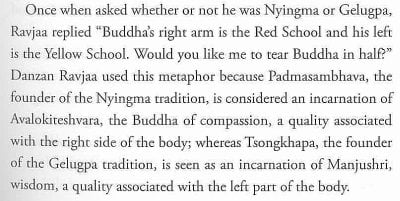Forget opium, tobacco or San Miguel, or even the Agatha Christie’s Poirot episodes various fiends have uploaded onto YouTube: the greatest addictive curse known to afflict mankind must be Amazon’s Buy with one click facility combined with its massive offering of used books from thousands of second-hand stores throughout the US. I last saw my copy of Jean Francois Revel’s Totalitarian Temptation back in the early 80s. Long out of print. Never to be seen again. But there is one – 91 cents plus US$3.99 shipping from someone in Ohio. Click. Click, click, click. This is deadly. (Yes, there’s a book on it.)
Among the books I read in 2010 stacked up at my bedside waiting to be transplanted to shelves are: Paul Johnson’s History of the Jews; Neal Stephenson’s Anathem; Steve Pincus’s 1688: The First Modern Revolution; Simon Singh’s Big Bang; Ali Allawi’s The Crisis of Islamic Civilization; Antony Beevor’s Paris After the Liberation; and on and on. In the lull before the next package from Amazon, I take a quick look at what Santa left me from Hong Kong’s Blacksmith Books and have a brief Kevin Bloody Wilson moment. These volumes aren’t really my thing. But what else is there? Thomas Pynchon’s Gravity’s Rainbow is sitting there, lying open halfway through after being started before last summer; I have all of 2011 to finish that. So here goes…
A quick glance at The Great Walk of China: Travels on foot from Shanghai to Tibet by Graham Earnshaw is a bit misleading. The author (an ex-Reuters man living in Shanghai) does not walk the route in the title in one go and has not, as of the final page, reached western Sichuan. Instead, he indulges in a sort of token, nine-to-five version of roughing it, doing the trip in stages and flying/taxiing in and out each time, including to hotels at night where necessary. But no matter. He pretty much skips this process (nor does he say who pays for this logistical extravagance, which would be interesting since the endeavour is apparently for charity) so the reader gets an impression of accompanying him on a steady uninterrupted plod, with some disjointed seasonal changes, through the rural back roads of middle China.
And very pleasant it is. At every dusty village we stop for a bottle of water and a chat with the storekeeper and hear what the locals have to say (cuts in taxes on farmers are a big hit). We are accosted by school kids who share with us their dreams for the future. We take photos of labourers planting and digging, and we make their day by helping out a bit. We hand our address out, plus invitations to visit, to a worrying number of friendly strangers. We admire the scenery on the plains and up in the mountains and valleys of the Three Gorges. We bump into the occasional outcast with a sad tale to tell. We enjoy the political slogans painted on the walls of old buildings. We run the risk of being a bit boorish by insisting on vegetarian food everywhere. And we have a bit of cheeky fun with cops who think it’s still the 1970s and ask for our IDs. Finally, turning a corner on a hillside one afternoon, we find, before we’ve even realized it, that we’ve reached page 341 and call a halt – though the great walk apparently continues/d.
In sum, an antidote to the media onslaught of modern China: after all the disasters, the new billionaires, the uprisings, the growing military might, the pollution, the corruption and the neon skyscrapers, here are the comfortingly mundane bits in between, coming across as almost exotic.
Most of us look the other way when we see children with extreme physical and mental disabilities. Some, if we are to be honest, do the same with books about them. I really did not want to read Wordjazz for Stevie: How a profoundly handicapped girl gave her father the gifts of pain and love by Jonathan Chamberlain.
The title didn’t help (wordjazz?), but maybe that’s just an excuse. You know it’s going to be icky, and I’ve never even changed a diaper for God’s sake. You know it’s going to be depressing. The author and his wife live on Cheung Chau. They have a baby. The baby, they are soon told, has Down syndrome. That comes with a hole in the heart. This needs an operation to fix. But the operation leaves the kid blind and semi-paralyzed as well. Everyone’s lives are going to be wrecked and wretched, and you’re going to catch yourself wondering why they didn’t just have an abortion, and then you’re going to feel rotten. If you’re in a really nasty mood, you might even ask why the author couldn’t just keep it to himself.
However, the book is a lot more welcoming – for want of a better word – than that. It is written in the form of a letter to the daughter who survived up to age eight before finally dying of pneumonia. It is nowhere near as mawkish as it could be. To the extent there is self-pity, it is blunt and concise. The details about doctors, hospitals and treatments, which do not always come out looking good, are dispassionate. Reflections on getting through to a child essentially trapped in a distant world are often intriguing; it comes down to touch, movement and music. If you want to be moved to tears you probably can be, but it’s not compulsory and the author shows no sign of wanting it. He celebrates the fact that the experience, which is to say Stevie’s existence, led him to found two charities that have benefited numerous lives. He discusses feelings, but he is a tough man who can get through it. As he needs to be: next thing, almost as an afterword at the end, his wife succumbs to cancer and dies, leaving him and one healthy kid.
After that, you might think that Lama of the Gobi: How Mongolia’s mystic monk spread Tibetan Buddhism in the world’s harshest desert by Michael Kohn would be light relief. But no.
Danzan Ravjaa was the fifth incarnation of Gobi Noyon Hutgat and as such he was (more or less) to 19th Century Mongolia what today’s Dalai Lama is to Tibet. By all accounts he was a character: part living God, part Robin Hood, part Omar Khayyam, knocking back fermented mare’s milk and hiding from Qing enemies in friendly yurts.
The problem is that the author knows his subject in depth, and the reader doesn’t. Certainly not this one. This is a (perhaps denser-than-average) example…
People who are really into this sort of thing rave about it, and apparently this book has sold well in California.
Is the world getting over mysterious traditions and creeds from desolate regions? One of Earnshaw’s closing comments is “I am not really very interested in Tibetan culture,” which tempted me to punch the air in delight. An introduction to the hero of Mongolian Buddhism for those of us who have never heard of him might be fascinating. But then, maybe it wouldn’t. Either way, this isn’t it. I resign myself to leaving this blank spot in my knowledge unfilled and reach with renewed eagerness to Gravity’s Rainbow.



This longtime lurker is devastated! Devastated utterly. A man of your culture and erudition! You haven’t finished the Pychon! (It’s pronounced Pinch-awn, btw. I learned this from a Simpsons episode.) I finished mine (2nd HB edition) in 2007, approx 15 years after starting.
Next you’ll be telling us you got bogged down midway through the first page of Finnegans Wake.
Re: GR: There’s a book about the book. And a wiki about the book about the book.
http://gravitys-rainbow.pynchonwiki.com/wiki/index.php?title=Main_Page
http://www.amazon.com/Gravitys-Rainbow-Companion-Contexts-Pynchons/dp/0820310263
And for the Pynchon fan, jubilation that there’s a new book out – and it’s meant to be readable! Maybe he’s hired an editor.
Hi Hemlock. Thanks for the review. One small clarification – i pay my own way on the logistics of the walk, which continues. no charity covered expense claims. All best, Graham